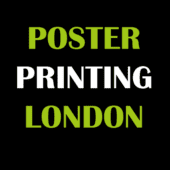Title: Crafting the Perfect Wanted Poster: A Step-by-Step Guide
Wanted posters have long been a staple of law enforcement, offering a visual means of alerting the public to individuals sought for various reasons, from criminals on the run to missing persons. Creating a compelling wanted poster requires attention to detail, a keen eye for design, and an understanding of key elements that capture attention and convey crucial information. In this comprehensive guide, we’ll walk you through the steps to craft your own wanted poster, whether for fun, educational purposes, or as a creative project.
1. Choose a Template or Design Software:
Start by selecting a template for your wanted poster or use graphic design software such as Adobe Photoshop, Illustrator, or Canva to create a custom design. Templates can provide a framework for your poster, including placeholders for text and images.
2. Select a Suitable Image:
Include a clear and recognizable image of the individual being sought. This could be a photograph, sketch, or composite image. Ensure the image is high-resolution and prominently displayed on the poster.
3. Add Descriptive Text:
Include essential details about the individual, such as their name, physical description (e.g., height, weight, hair and eye color), distinguishing features (e.g., tattoos, scars), and any aliases or known associates. Use bold fonts and concise language to make the text easy to read.
4. Specify the Crime or Offense:
Clearly state the reason why the individual is wanted, whether it’s for a crime they’ve committed, information they possess, or their involvement in a particular incident. Provide details such as the nature of the offense, date of occurrence, and any relevant case numbers or law enforcement contacts.
5. Include Reward Information (Optional):
If there is a reward for information leading to the apprehension of the individual, prominently display this information on the poster. Specify the amount of the reward and any conditions or criteria for eligibility.
6. Add Logos or Emblems (Optional):
To lend authenticity to your wanted poster, consider adding logos or emblems of law enforcement agencies, government organizations, or other relevant entities. This can enhance credibility and legitimacy.
7. Design for Visual Impact:
Utilize color, typography, and layout techniques to create a visually striking poster that captures attention. Use contrasting colors for text and background to ensure readability, and incorporate design elements that evoke a sense of urgency or importance.
8. Proofread and Review:
Before finalizing your wanted poster, carefully proofread all text for accuracy and clarity. Ensure that all information is correct and up-to-date, and double-check the placement and formatting of images and text.
Conclusion:
Crafting a wanted poster is not only a creative endeavor but also an opportunity to practice effective communication and graphic design skills. By following the steps outlined in this guide and paying attention to key elements such as imagery, descriptive text, and visual design, you can create a compelling and authentic wanted poster that effectively conveys information and captures attention. Whether used for educational purposes, as a novelty item, or for a themed event, a well-designed wanted poster can be a memorable and engaging piece of visual communication.
